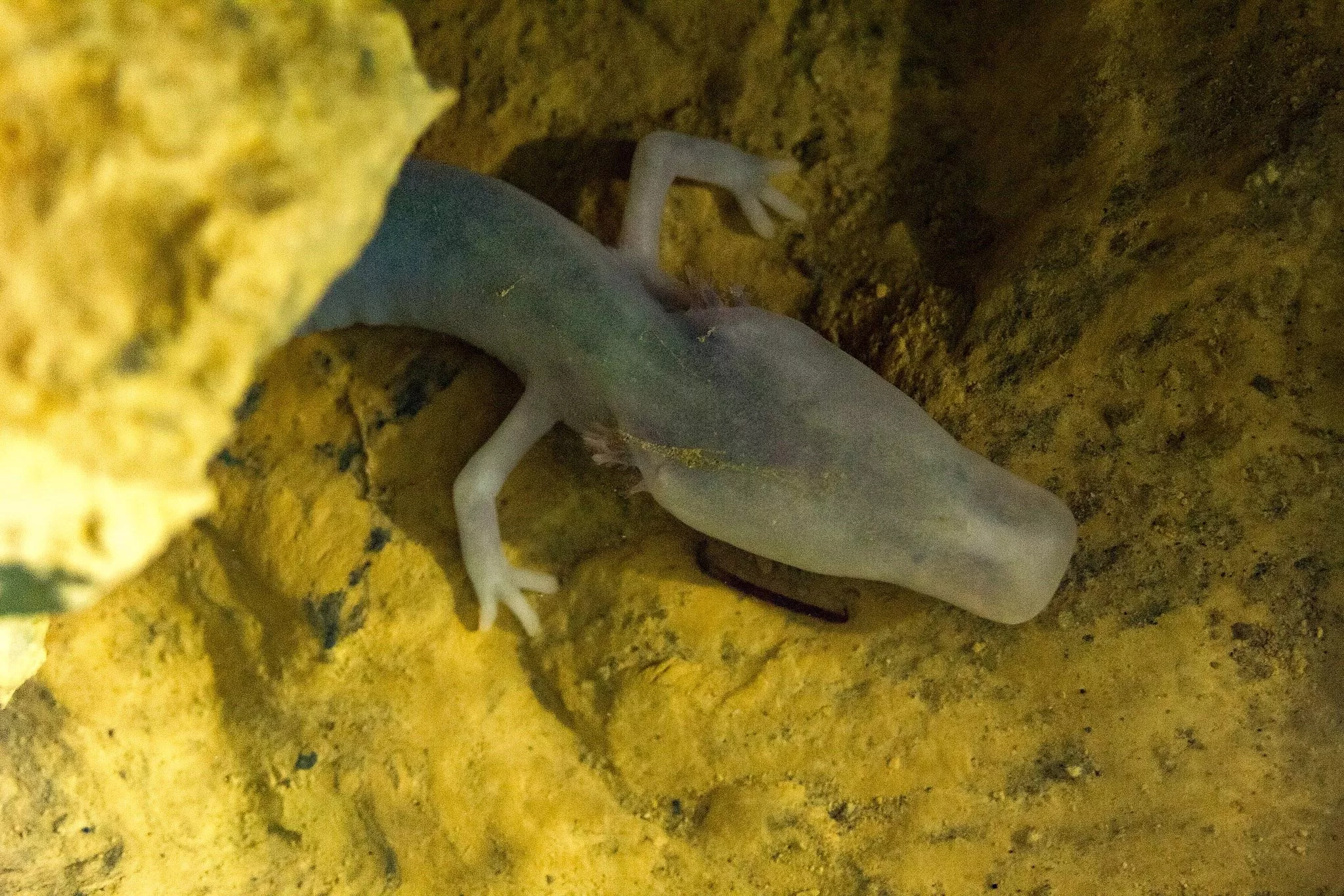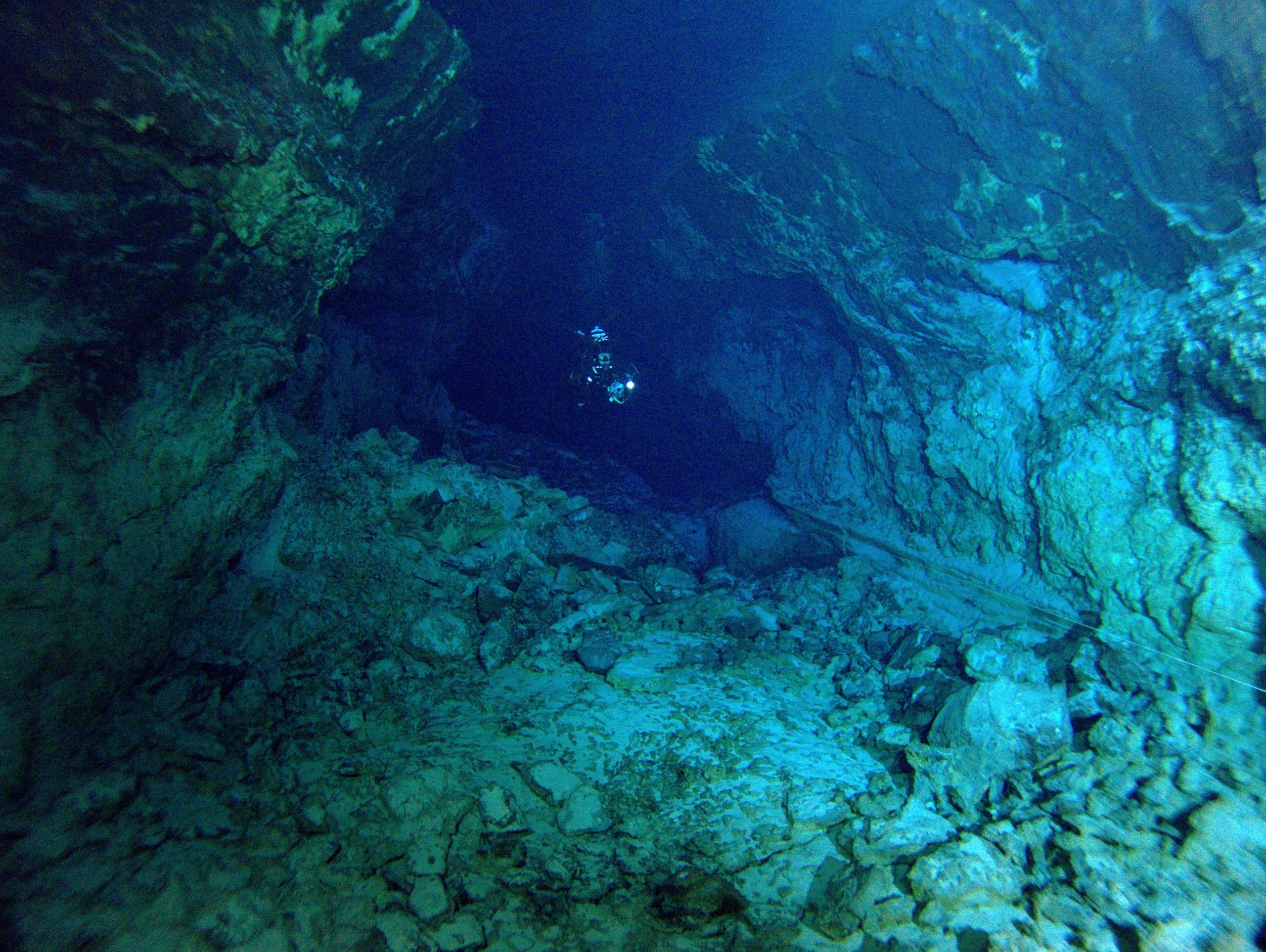In the watery underground cave, there are some strange creatures living in an eternal midnight. Through the efforts of several generations, these animals have adapted to their unique isolated environment. Scientists believe that their mushy skin and blind eyes may contain the secrets of evolution - and may reveal the genetic adaptability of human longevity, survival in hunger and eye diseases.

Professor Peter trontelj, a zoologist from the University of Ljubljana in Slovenia, said: "these caves are isolated worlds. If you walk a few meters (below the earth's surface), you enter a new world with completely different ecological conditions."
Some animals can adapt to these dark habitats without plant growth, thus making the dark caves - such as those found in Slovenia - a natural laboratory of evolutionary biology.
Trontelj is the director of the genevolcav project, which is currently studying European cave newts. These unusual cave salamanders resemble small ghostly swimming snakes with four bony legs and a crocodile nose. Long ago, the ancestors of cave newts lived on the ground, but when they were trapped in these caves, they would undergo great physical changes to cope with the new environment. Cave newts are not the only creatures that can evolve in this way.

Historically, evolutionary biologists believe that if we go back to the past and replay the evolutionary timeline, we can take different evolutionary paths, and the world and the creatures in it will look completely different. But caves tell scientists that this is not the case. The adaptation of animals to light and nutrient deficient environments such as underground caves "is usually quite predictable," trontelj said. "We now know that we go the same way every time.".
Genevolcav has overturned people's understanding of these rare cave salamanders. The researchers found nine potentially different species, rather than just one as previously thought. Each species independently evolved similar characteristics in the eternal water darkness.
Although they have the same bleached skin, blind eyes and long nose, these species are descended from different individual ancestors who discovered the way they entered these midnight caves. "Everything happens independently, but more or less in parallel," says trontelj
DNA diving
The project aims to assemble the genome of the newt, which is about 16 times larger than the human genome, and identify the genetic changes that enable the newt to adapt to its unique environment.
"(physical) changes are the same or very similar, but the question is: 'are they caused by the same genes (and) Asked trontelj. To answer these questions, trontelj and his colleagues dived into dark corners of the ground -- sometimes 400 meters deep -- to measure burrowing salamanders and wipe their skin to collect DNA. They will need hundreds of samples to investigate these problems, which may have important implications for human medicine.
Trontelj said: "from a broader point of view, (cave newt) There are several interesting features. These milky amphibians can live for hundreds of years, 10 times longer than their apparent ancestors, and can survive years of starvation. In the dark, burrowing salamanders also lose color and become blind. It has been known that the pigment loss and eye degeneration of cave fish may be caused by several different genes, some of which are related. The scientists also linked this group of genes to 'some pathological conditions of human eye degeneration and albinism'. Understanding these mechanisms, which occur in a predictable manner, may also help us understand some degenerative diseases in humans. "
But the burrowing salamanders that can only survive in these niche habitats are vulnerable. "These caves and groundwater are quite endangered, and sometimes even threatened by pollution," trontelj said. "If we don't describe new species, if they don't have a name, they won't be protected like a fully mature species."
The same is true of worms, crustaceans and sometimes even fish that live in the dark depths of the earth.
Underground database
Alejandro mart í Nez, head of the ancave project, is working to create a database on such organisms. His database has more than 330000 entries, which draws on all the references on underground cave animals published in various written languages in the scientific literature.
It is called the "stygofauna Mundi" database, referring to a book by naturalist Lazare botosaneanu, who was a pioneer in studying these underground creatures. "We are trying to make all this information public," mart í Nez said
About 10 per cent of the entries in this database are animals of particular interest to mart í Nez: those living in coastal aquifers, also known as anchored environments. What is special about these underground caves is that their water is salty, supplied by the nearby ocean through underground cracks and fissures, and mixed with fresh water infiltrated from above. These environments exist all over the world, including the Canary Islands where Martinez grew up.
And the animals are unique. Mart í Nez said: "many animals are unique to this type of habitat, and they cannot be found elsewhere." He pointed out that they looked strange and primitive to some extent. "They are similar to what we know from the fossil record, but they are now extinct."
Other animals share a common ancestor with animals in the sea, but their seclusion in caves means that they cannot interbreed, allowing scientists to compare cave dwellers with their relatives in the sun.
"(some) are similar to other animals found in the deep sea today. They are genetically similar to each other, but in form (body), they are very different... By comparing these types of species around the world, we can try to better understand how animals change shape to adapt to the new environment," Mart í Nez said. Up to now, he has personally added species to the database as part of the ancave project. It is reported that mart í Nez sampled about 50 caves in the Mediterranean, Caribbean and several Atlantic Islands. In these caves, he measured the relative abundance of animals, captured some animals, and then described them morphologically and genetically.
Midnight cave
However, this database is only the first step. "We can see what happens in all these lineages. We can get rid of these confounding effects of phylogeny (how a species or group evolves) and understand morphological changes," mart í Nez said.
By recording the breadth of biodiversity in the underground midnight caves, scientists can clarify the nature of evolution and how animals change.
But mart í Nez also recognizes that databases and the study of the underground world will only cause more problems. In fact, this is why he keeps returning to these dark water holes.